There have been so many instances of a cricketer turning out for two international teams that it’s sometimes quite confusing. The best example of this (in modern times) is Eoin Morgan, who turned out for both Ireland and England in limited-overs cricket. While the list of such players is quite immense and unique, there is yet another category which is head and shoulders above everything else.This category consists of those who were born in nations where the concept of cricket, let alone the game itself, is alien. Former England captain Freddie Brown achieved more laurels in playing for the British than choosing a mundane life in Lima, Peru. Yet again, Jehan Mubarak turned out for Sri Lanka despite being born in the United States.Here are seven acclaimed players, born on the wrong side of the cricketing track, who achieved a significant amount of fame via the Gentleman’s Game:
#7 Moises Henriques (Australia)
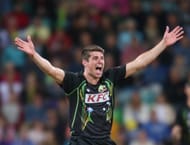
Australia has this uncanny ability to churn out one skilled all-rounder after another in international cricket. What sets Moises Henriques apart from the others, however, is the fact that he was born in Funchal, Portugal. Blessed with nagging bowling accuracy and hard-hitting abilities, the 28-year-old is an integral part of the New South Wales Blues setup for the limited-overs versions of the game.
Henriques has also found some success in Test cricket, as his two half-centuries against India on debut in 2013 suggest. He also has faced the ignominy of being at the receiving end of Kieron Pollard’s fury during the 2009 Champions League T20 tournament, when the West Indian giant smashed him all over the Ferozeshah Kotla ground. Nevertheless, the young all-rounder has proved to be a vital cog in Australia’s Twenty20 plans and continues to impress for the sides he plays for.
#6 Geraint Jones (England)
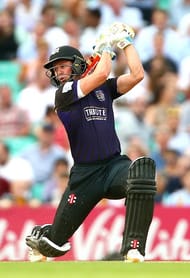
It’s quite difficult to find a player with a multi-national history in the world of cricket. But that is what makes Geraint Owen Jones unique in his own right. The wicket-keeper batsman, who played a key role in the 2005 Ashes, was born in Papua New Guinea and raised in Australia where he honed his cricketing skills.
Jones later moved to England, where he replaced Chris Read as wicket-keeper for the national side in 2004. Some of his personal highlights include a classic century against New Zealand in Test cricket and steering his side to a tie against Australia in one of the Natwest finals at Lord’s. Notably, he was at the other end when Andrew Flintoff compiled a magnificent hundred at Trent Bridge during the 2005 battle for the Ashes urn.
Loss of form, dropped catches, missed stumpings and a decline in his batting led to the wicket-keeper batsman being dropped after the 2006-07 Ashes series. He turned out for his birth country in the 2012 ICC World Twenty20 Qualifiers and also featured in a few One-Day games, before retiring from all forms of cricket in July 2015.
#5 Salim Durani (India)
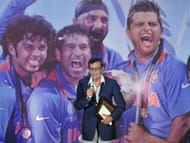
While the Afghanistan cricket team is currently making waves on the international scene, there was a time when cricket was not even known to many on that side of the subcontinent. India, however, benefited supremely from that nation they gained an all rounder who became famed for his big hitting and reliable left arm spin.
His name? Salim Aziz Durani, rising up from the arid lands of Kabul in Afghanistan, to become a notable figure in Indian cricket. During his playing days, he turned out for Gujarat, Saurashtra and Rajasthan the latter of which made the Ranji Trophy finals seven times in the sixties but could never win the title even once.
Durani, however, is known more for his remarkable ability to hit sixes to raucous crowd demands. He was also considered to be the architect of indias series victories against England in 1961-62, and also made a magnificent century against the West Indies in the same season. The tall, lanky left-hander was also part of Indias historic triumph over the West Indies in 1971, notably dismissing both Clive Lloyd and Gary Sobers at Port of Spain, Trinidad.
A special favourite of Indian spectators, crickets originalMr. Sixerwas the first recipient (from the Gentlemans Game) of the Arjuna Award, and was felicitated by the BCCI with the CK Nayudu Lifetime Achievement award in 2011.
#4 John Traicos (Zimbabwe)
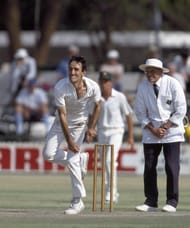
Egypt is primarily known for its pyramids, the pharaohs, Queen Cleopatra and the Nile river. However, no one expected the African nation to throw up a man who would become one of the key sportsmen of his time, in a game more commonly associated with England, Australia, the West Indies, and other nations. In yet another distinction, this cricketer would go on to play for two international squads during his entire career.
Athanasios John Traicos emerged from Zagazig in Egypt and grew up in Rhodesia, having moved to that nation in 1948. At the age of 23, the off-spinner debuted for the South African national team against Australia, and did well enough to pick three wickets in his first ever Test match. Tragedy struck, though, when the Proteas were banned from international cricket immediately after that series. It seemed Traicos dreams would be forever crushed.
Rhodesia eventually gained indepedence, renaming itself Zimbabwe, and the Greek-origin cricketer continued to play for them throughout the eighties. One of his highs was the shock defeat of Australia in the 1983 World Cup(a side filled with ODI debutants). He continued to play for Zimbabwe till 1992, when they achieved Test status, and responded with a five-wicket haul against India. At 45, he became the then oldest player to participate in a Test match, with the time frame between his debut and second games being a whopping 22 years and 222 days. Oldest, but definitely not the slowest.
Traicos is also noted for working with Eddo Brandes in the 1992 World Cup the latter went on to knock the stuffing out of the English line up with a four-wicket haul.
#3 Donald Carr (England)
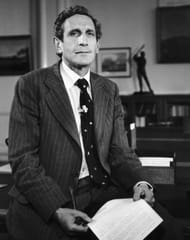
The second England player to make this list, Donald Bryce Carr was born in Wiesbaden, Germany, where his father served as an officer of the British Army. An extremely talented right-handed batsman and left-arm spinner, he went on to captain Derbyshire from 1955 to 1962. Though his entire international career lasted for just two Test matches (both against India), Carr was one of the best all-rounders the game had ever witnessed.
The 88-year old possesses an interesting record in Test matches: he was chosen to lead the side during the final leg of thetwo-game series against India in 1951-52. In the first match, his extraordinary rearguard action and partnership with Allan Watkins enabled England to save the game. He found more success in county cricket and at Oxford University; his career-best score of 170 came against Leicestershire in the 1949 season.
In a long administrative career, Carr has fulfilled multiple roles as ICC match referee, assistant secretary of the MCC, and secretary to the Test and CountyCricket Board (the present-day England & Wales Cricket Board ECB). In the last of those positions, he is widely noted for his efficient handling of crises such as the Packer cricketing circus and the rebel tour to South Africa.
#2 Ted Dexter (England)
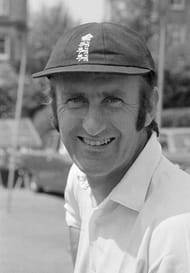
Much before Andrew Flintoff and Kevin Pietersen arrived on the scene, there was Edward Ted Dexter. A powerful striker of the cricket ball, the six-foot tall England captain dominated fast bowling with a grace befitting a king, having once smashed a 73-minute 70 against the fearsome duo of Wes Hall and Charlie Griffith. Six of his nine Test centuries went beyond the 140 mark, and Lord Ted could play in both attack mode as well as in graft mode. Successive Ashes defeats, however, led to his criticism as a captain, despite his personal form being unaffected.
The former Sussex player was born in Milan, Italy a place now known more for its football teams and studied at Cambridge, where he also excelled at golf and rugby. His tenure as captain of the English team was a mixed bag, yet he commanded immense respect among spectators and fans alike. His buccaneering style suited the One-day format quite well, particularly in the Sunday League. A freak injury ended his playing career, and he went on to become chairman of the England Cricket Selectors til 1993.
Till date, Dexter remains the only Italy-born player to represent a full member of the Test-playing nations.
#1 George Headley (West Indies)
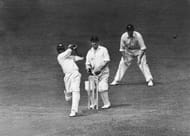
One of the greatest willow-wielders of all time, George Headley was to the West Indies what Don Bradman was to the Aussies a batting marvel. Audacious strokeplay, combined with lightning-quick footwork, made him a fearsome opponent . Indeed, in the words of Lord Tennyson, Headley was the true successor to the revered Victor Trumper.
Such skill would have been lost to the cricketing world if the young man had remained in Panama, where he was born in 1909. His father had worked on the constructon of the Panama Canal, and subsequently spent time in Cuba when Headley was five. Had it not been for his mothers insistence that he move to Jamaica in order to be educated in an English-speaking school,Atlas(his soon-to-be acquired nickname) would have been a nondescript, Spanish-speaking professional.
He made another piece of history through his progeny: son Ron and grandson Dean would also go on to represent both the West Indies and England in Tests, respectively.
Follow IPL Auction 2025 Live Updates, News & Biddings at Sportskeeda. Get the fastest updates on Mega-Auction and cricket news